
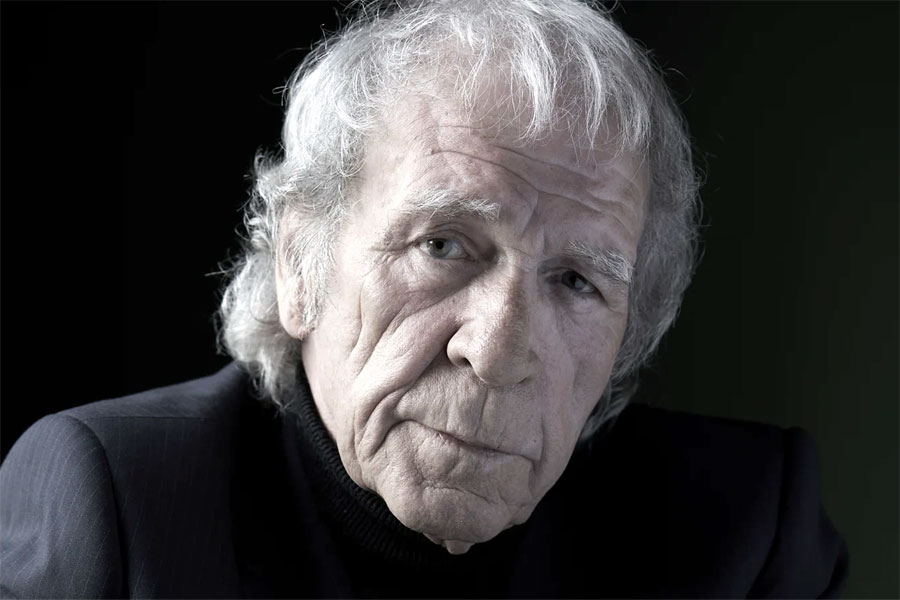
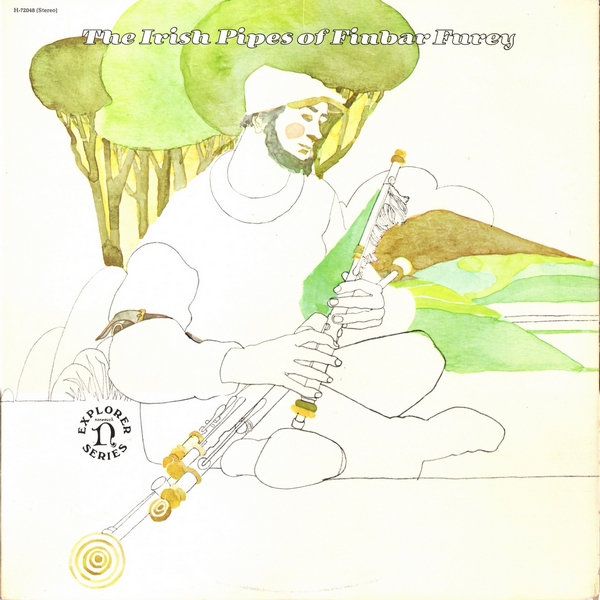 |
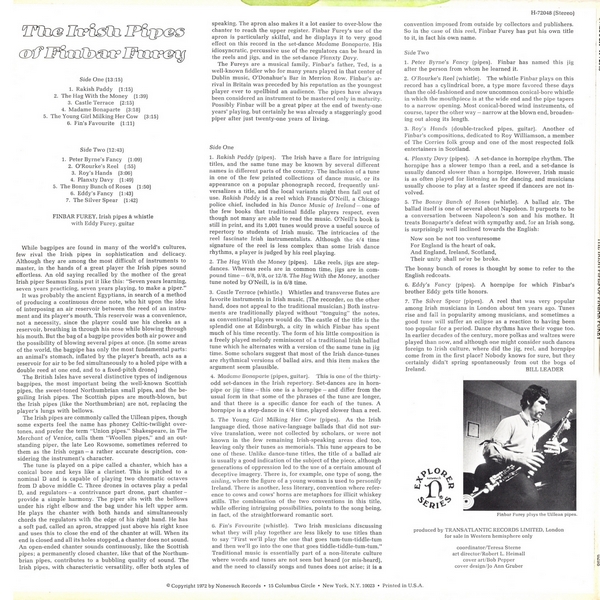
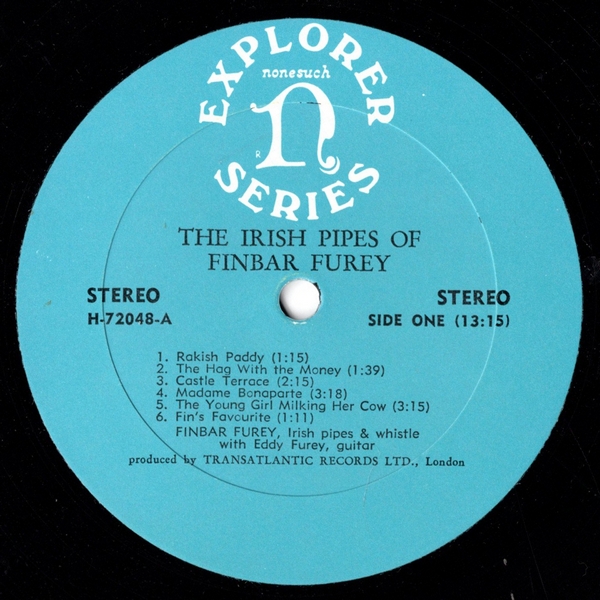
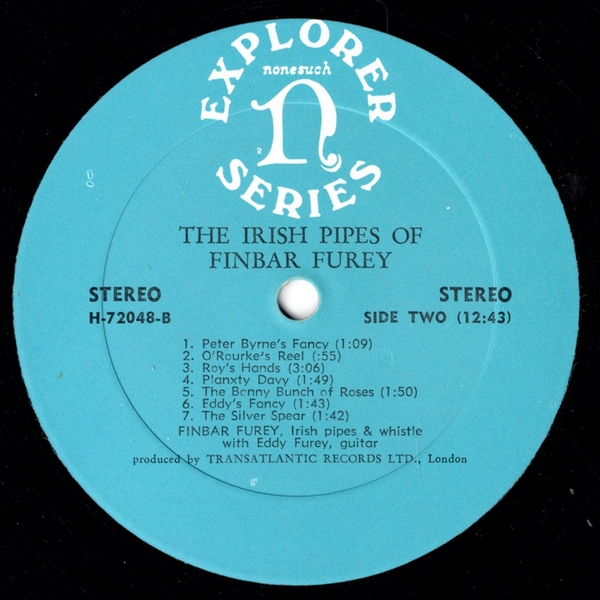
|
Sleeve Notes
While bagpipes are found in many of the world's cultures, few rival the Irish pipes in sophistication and delicacy. Although they are among the most difficult of instruments to master, in the hands of a great player the Irish pipes sound effortless. An old saying recalled by the mother of the great Irish piper Seamus Ennis put it like this: "Seven years learning, seven years practicing, seven years playing, to make a piper."
It was probably the ancient Egyptians, in search of a method of producing a continuous drone note, who hit upon the idea of interposing an air reservoir between the reed of an instrument and its player's mouth. This reservoir was a convenience, not a necessity, since the player could use his cheeks as a reservoir, breathing in through his nose while blowing through his mouth. But the bag of a bagpipe provides both air power and the possibility of blowing several pipes at once. (In some areas of the world, the bagpipe has only the most fundamental parts: an animal's stomach, inflated by the player's breath, acts as a reservoir for air to be fed simultaneously to a holed pipe with a double reed at one end, and to a fixed-pitch drone.)
The British Isles have several distinctive types of indigenous bagpipes, the most important being the well-known Scottish pipes, the sweet-toned Northumbrian small pipes, and the beguiling Irish pipes. The Scottish pipes are mouth-blown, but the Irish pipes (like the Northumbrian) are not, replacing the player's lungs with bellows.
The Irish pipes are commonly called the Uillean pipes, though some experts feel the name has phoney Celtic-twilight overtones, and prefer the term "Union pipes." Shakespeare, in The Merchant of Venice, calls them "Woollen pipes," and an outstanding piper, the late Leo Rowsome, sometimes referred to them as the Irish organ — a rather accurate description, considering the instrument's character.
The tune is played on a pipe called a chanter, which has a conical bore and keys like a clarinet. This is pitched to a nominal D and is capable of playing two chromatic octaves from D above middle C. Three drones in octaves play a pedal D, and regulators — a contrivance part drone, part chanter — provide a simple harmony. The piper sits with the bellows under his right elbow and the bag under his left upper arm. He plays the chanter with both hands and simultaneously chords the regulators with the edge of his right hand. He has a soft pad, called an apron, strapped just above his right knee and uses this to close the end of the chanter at will. When its end is closed and all its holes stopped, a chanter does not sound. An open-ended chanter sounds continuously, like the Scottish pipes; a permanently closed chanter, like that of the Northumbrian pipes, contributes to a bubbling quality of sound. The Irish pipes, with characteristic versatility, offer both styles of speaking. The apron also makes it a lot easier to over-blow the chanter to reach the upper register. Finbar Furey's use of the apron is particularly skilful, and he displays it to very good effect on this record in the set-dance Madame Bonaparte. His idiosyncratic, percussive use of the regulators can be heard in the reels and jigs, and in the set-dance Planxty Davy.
The Fureys are a musical family. Finbar's father, Ted, is a well-known fiddler who for many years played in that center of Dublin music, O'Donahue's Bar in Merrion Row. Finbar's arrival in Britain was preceded by his reputation as the youngest player ever to spellbind an audience. The pipes have always been considered an instrument to be mastered only in maturity. Possibly Finbar will be a great piper at the end of twenty-one years' playing, but certainly he was already a staggeringly good piper after just twenty-one years of living.
Rakish Paddy (pipes). The Irish have a flare for intriguing titles, and the same tune may be known by several different titles in different parts of the country. The inclusion of a tune of the few printed collections of dance music, or its appearance on a popular phonograph record, frequently universalizes a title, and the local variants might then fall out of use. Rakish Paddy is a reel which Francis O'Neill, a Chicago police chief, included in his Dance Music of Ireland — one of the few books that traditional fiddle players respect, even though not many are able to read the music. O'Neill's book is still in print, and its 1,001 tunes would prove a useful source of repertory to students of Irish music. The intricacies of the reel fascinate Irish instrumentalists. Although the 4/4 time signature of the reel is less complex than some Irish dance rhythms, a player is judged by his reel playing.
The Hag With the Money (pipes). Like reels, jigs are step-dances. Whereas reels are in common time, jigs are in compound time — 68, 9/8, or 12/8. The Hag With the Money, another s noted by O'Neill, is in 6/8 time.
Castle Terrace (whistle.) Whistles and transverse flutes are favorite instruments in Irish music. (The recorder, on the other hand, does not appeal to the traditional musician.) Both instruments are traditionally played without "tonguing" the notes, as conventional players would do. The castle of the title is the splendid one at Edinburgh, a city in which Finbar has spent much of his time recently. The form of his little composition is a freely played melody reminiscent of a traditional Irish ballad ! which he alternates with a version of the same tune in jig . Some scholars suggest that most of the Irish dance-tunes o rhythmical versions of ballad airs, and this item makes the at seem plausible.
Madams Bonaparte (pipes, guitar). This is one of the thirty-odd set-dances in the Irish repertory. Set-dances are in hornpipe or jig time -this one is a hornpipe — and differ from the usual form in that some of the phrases of the tune are longer, and that there is a specific dance for each of the tunes. A hornpipe is a step-dance in 4/4 time, played slower than a reel.
The Young Girl Milking Her Cow (pipes). As the Irish language died, those native-language ballads that did not survive translation, were not collected by scholars, or were not known in the few remaining Irish-speaking areas died too, leaving only their tunes as memorials. This tune appears to be one of these. Unlike dance-tune titles, the title of a ballad air is usually a good indication of the subject of the piece, although generations of oppression led to the use of a certain amount of deceptive imagery. There is, for example, one type of song, the aisling, where the figure of a young woman is used to personify Ireland. There is another, less literary, convention where reference to cows and cows' horns are metaphors for illicit whiskey stills. The combination of the two conventions in this title, while offering intriguing possibilities, points to the song being, in fact, of the straightforward romantic sort.
Fin's Favourite (whistle). Two Irish musicians discussing what they will play together are less likely to use titles than to say "First we'll play the one that goes tum-tum-tiddle-tum and then we'll go into the one that goes tiddle-tiddle-tum-tum." Traditional music Hs essentially part of a non-literate culture where words and tunes are not seen but heard (or mis-heard), and the need to classify songs and tunes does riot arise; it is a convention imposed from outside by collectors and publishers. So in the case of this reel, Finbar Furey has put his own title to it, in fact his own name.
Peter Byrne's Fancy (pipes). Finbar has named this jig after the person from whom he learned it.
O'Rourke's Reel (whistle). The whistle Finbar plays on this record has a cylindrical bore, a type more favored these days than the old-fashioned and now uncommon conical-bore whistle in which the mouthpiece is( at the wide end and the pipe tapers to a narrow opening. Most conical-bored wind instruments, of course, taper the other way — narrow at the blown end, broadening out along its length.
Roy's Hands (double-tracked pipes, guitar). Another of Finbar's compositions, dedicated to Roy Williamson, a member of The Corries folk group and one of the most respected folk entertainers in Scotland.
Planxty Davy (pipes). A set-dance in hornpipe rhythm. The hornpipe has a slower tempo than a reel, and a set-dance is usually danced slower than a hornpipe. However, Irish music is as often played for listening as for dancing, and musicians usually choose to play at a faster speed if dancers are not involved.
The Bonny Bunch of Roses (whistle). A ballad air. The ballad itself is one of several about Napoleon. It purports to be a conversation between Napoleon's son and his mother. It treats Bonaparte's defeat with sympathy and, for an Irish song, is surprisingly well inclined towards the English:
Now son be not too venturesome
For England is the heart of oak,
And England, Ireland, Scotland,
Their unity shall ne'er be broke.
The bonny bunch of roses is thought by some to refer to the English redcoats.
Eddy's Fancy (pipes). A hornpipe for which Finbar's brother Eddy gets title honors.
The Silver Spear (pipes). A reel that was very popular among Irish musicians in London about ten years ago. Tunes rise and fall in popularity among musicians, and sometimes a good tune will suffer an eclipse as a reaction to having been too popular for a period. Dance rhythms have their vogue too. In earlier decades of the century, more polkas and waltzes were played than now, and although one might consider such dances foreign to Irish culture, where did the jig, reel, and hornpipe come from in the first place? Nobody knows for sure, but they certainly didn't spring spontaneously from out the bogs of Ireland.
Bill Leader